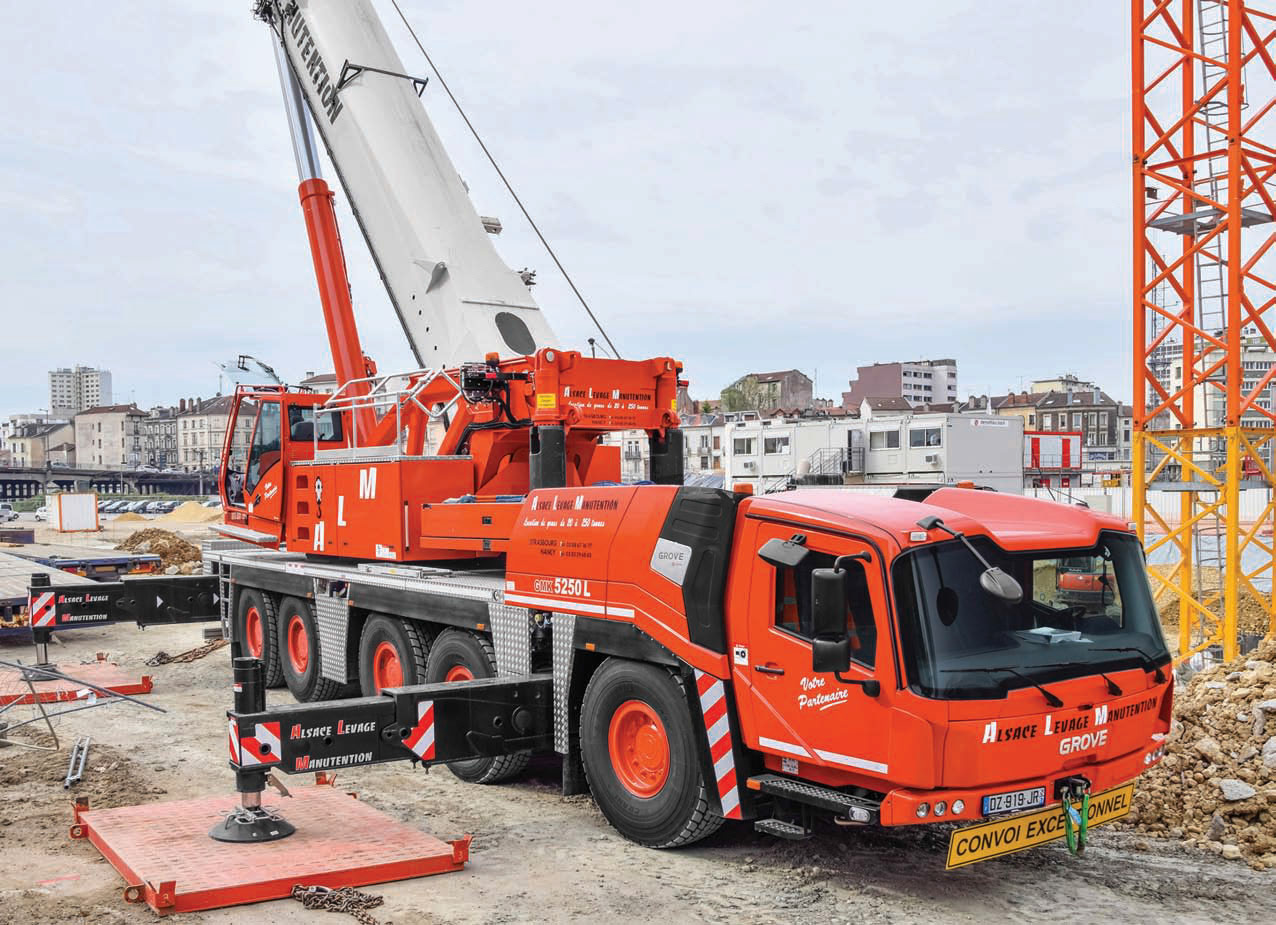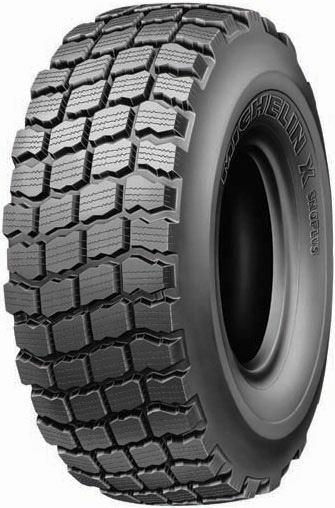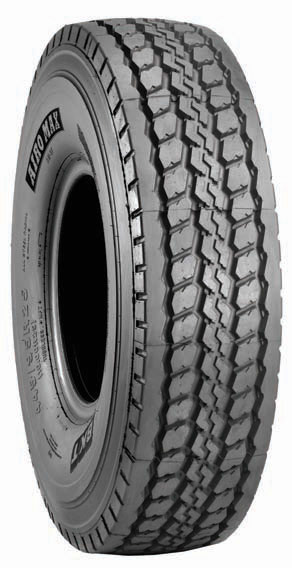Tread carefully
17 May 2017Choosing the right type of tyre for a mobile crane is crucial. Bernadette Ballantyne looks into how owners go about finding the right blend of performance, longevity and price.
Whether buying from Bridgestone, Michelin, Dunlop, Magna, Mitas, ATG, Double Coin or BKT, crane owners want high-performance tyres that last as long as possible.
“Everyone is looking for the same thing: longevity,” says Neil Berry, CEO of UK-based Berry Crane Hire. “I look at changing my cranes every four years, and I look for a tyre that will last that long so I don’t end up with a big bill before I sell them. A typical tyre for a Tadano all terrain costs £1,000–1,200.”
Berry switched to Mitas around three years ago and praises the customer service of the Czech-based company. “Mitas has a service engineer who will investigate any problems or issues that you may have,” he says.
To better understand tyre performance, Berry had his all terrains fitted with heat and pressure monitoring software more than a year ago. “Temperature is very important,” he states. “Tyres infl ate as they warm up, so the hotter they get, the more problematic they can be.” Monitoring also helps drivers to notice when a tyre is losing pressure. “When a driver gets in and looks at the tyre, he might think it looks all right, but it might be 30psi less than it is supposed to be.”
Heating up
Prevention of overheating has been a focus for tyre manufacturers in recent years. Netherlands-based Magna has improved its internal casing to reduce heat gain. At bauma 2016, the fi rm launched the MA03+, which has an improved irregular wear pattern to reduce rolling resistance and fuel consumption, and provide greater operator comfort. Magna also says that its special crane compound offers a longer tyre life and shorter braking distance. Such developments are part of a wider expansion strategy that includes a new 24,000m2 warehouse space at its headquarters to allow it to better serve its global customers.
Another area of development that has been discussed – but not yet translated into products – is a drive to change tyre diameters to create more available height for cranes. Weight has also been driven down: Mitas’s CR02, which was released in March 2016, is lighter than its predecessor (the CR01) and has a new tread design.
Tread design is an important safety consideration. In wet conditions, the grooves in the tyre divert water away from the area touching the ground (the ‘contact patch’), improving grip. Their arrangement dictates the effectiveness of this drainage; a higher groove-to-rubber ratio means greater water-storage capacity. However, fewer grooves mean a bigger contact patch and, therefore, better grip, so getting the right balance is crucial.
Grip is particularly important for mobile-crane performance. A larger contact area allows the crane to apply less pressure per unit of area and maintain a higher position on the ground, reducing soil compaction and slippage.
Increasing the contact area was the main premise behind radial tyres, which were first commercialised by Michelin in 1946. Footprint was increased by allowing the sidewall to deflect, greatly improving performance. The new design, which was also stronger and more flexible, made its debut on Citroën cars, before expanding into trucks in the early 1950s.
Unlike its cross-ply predecessor, radial uses steel-cord plies running parallel to each other and vertical to the bead. These reduce the likelihood of puncture and also distribute heat, improving fuel economy. In previous designs, the cords crossed over each other, which created strength but increased vulnerability to heat gain.
“BKT supplies the crane industry with radials and bias tyres,” says the Indian company’s president and director of technology, Dilip Vaidya.
The firm invests around 3.5% of its annual sales revenue into research and development, and is working on new products for the crane industry.
“Two different radial products – AIROMAX AM 27 and AM 543 – are available. They are E and F-rated and can be used on rough-terrain cranes,” says Vaidya, explaining that the AM 543 pattern is more suitable for offroad services, whereas the AM 27 is more suitable for roads. “The five-rib pattern with a continuous shoulder rib ensures high speed, along with excellent steering performance,” he continues. “The tread is made of a special compound that optimises wear and cut resistance.” The AIROMAX AM 27 is available in four sizes and has a strong, all-steel casing that increases durability, as well as resistance to cuts and punctures. The AM 543, meanwhile, is designed to provide maximum traction, stability and heat resistance for off-road cranes.
“Two different bias tyres are available,” says Vaidya. “The CRANE SPECIAL and XL GRIP IND3 are recommended for rough-terrain cranes only.” The former comes in three different sizes and is suitable for pickand- carry work, while the latter is for gantry and RTG cranes, and comes in six different sizes.
All-terrain focus
Due to their multipurpose use, all terrain machines require the widest performance characteristics of all mobile cranes. “You need a tyre that is good enough to be used off-road, but that can also be driven on highways at 80km/h,” says Andreas Cremer, product manager for all terrains at Manitowoc. “This limits your choice.”
The manufacturer fits Michelin’s X-CRANE + as standard on its all terrain models. The French company claims that this all-terrain-specific model has an increased wear life of up to 15% due to a new, more resistant rubber compound in the tread and use of the latest-generation casing, known as C2, which reduces heat build-up in the shoulders when in use, thereby extending longevity. The steel cables have also been made more resistant. The tyre is free from aromatic oils and designed with a more rigid compound in the tread.
Irregular wear patterns have been designed to reduce vibrations and the tyres can be regrooved to provide a longer-lasting bead area, while the optimised geometry of the tyre/rim contact surface makes them easier to mount.
The X-CRANE + was released in December 2013 and follows the X-CRANE AT. Other models available for mobile cranes are the Michelin XGC and the SNOPLUS 170E, which are designed for operation in more extreme conditions, such as snow and mud. The latter incorporates multiple sipes (slits improving traction) and offset shoulder blocks to ensure good traction in mud, and on snow and ice.
The pattern, open at the shoulders, is the foundation for self-cleaning in snow or mud, while redesigned sidewalls feature a protective band to protect against accidental damage.
Manitowoc has also been working to ensure that the steering systems on its cranes promote longevity in the tyres. “To reduce the tyre wear, we are using electronic systems where our steering is really optimised in terms of the angles at which we are driving, so we generate a lot of lifetime out of those tyres,” says Cremer.
Manitowoc supplies tyres for its all terrains in three sizes: 14.0, 16.0 and 20.5in. Smaller tyres are used by customers who don’t need wider tyres and are seeking to keep weight low.
The most commonly applied is the 16.0in version, with the 20.5in popular in North America and Australia, where better weight distribution is required due to their regulations, which base the allowable axle load on the applied road pressure as opposed to Europe, where the 12t-per-axle limit is enforced.
Manitowoc will fit tyres from Bridgestone, as well as other manufacturers, on request. “We also offer low-cost options to customers who don’t want to pay the higher prices for premium-brand tyres. We had some poor experiences with a previous supplier of these, but we’re currently in advanced negotiations with an alternative supplier,” Cremer says.
Wales-based Davies Crane Hire moved from premium brands to China’s Double Coin back in 2008.
“They were working well and there was no problem, but then, all of sudden, you couldn’t get hold of them,” says managing director Malcolm Davies. As a result, the firm went back to buying Bridgestone and Michelin.
“It does happen sometimes,” says Simon Scanlan of Liverpool’s Kirkby Tyres, which considers the Double Coin and BKT wares that it sells for mobile-crane use to be mid-range options. “You don’t hold all that many, especially with currency fluctuations. If there was a shortage, someone might have bought another brand.”
Rough times
Rough terrains do not require radial tyres. “This makes the tyres simpler, as you only have to look at fit and robustness,” says Cremer. “You don’t get those heat problems with high speed, or other problems. Off-road environments are very rough on the tread, so it is all about traction.”
“The biggest factor in selecting a tyre for a rough terrain is really the load index, getting the approvals based on tyre loads and axle loads as far as the gross vehicle weight,” explains Paul Cutchall, rough-terrain product manager for sales and marketing at Manitowoc.
“That, and the capability of sidewall deflection for the pick-and-carry capabilities that rough terrains offer.” Rough-terrain vehicles – which are generally driven at low speed and so don’t face the same heat issues as all terrains moving quickly on roads – are able to use cheaper, bias-ply tyres. “Manitowoc does have a few customers that occasionally ask for radials, but these are really designed for road use as they have better capabilities and more mileage. For a rough terrain, 20 miles an hour is fast.”
At Manitowoc, these tyres are typically known as ‘off-the-road’ (OTR), and the firm supplies five different sizes across its nine rough terrain models.
Of course, the tyres that arrive with new cranes are only part of the story.
Crane and fleet owners must maintain and update their machinery, and that includes new tyres, as the hard realities of life as a mobile crane, from site work to high mileage, inevitably take their toll. However, the variable nature of the applications makes it very difficult for owners to compare longevity accurately. “Sometimes, a crane will be on the road regularly, and then on site for two months,” says Davies.
“The most important thing is that you get the pressure right and use the same make of tyre on the same axles. Five years ago, we realised that some of its machines had three different makes on them. Once they were changed, the drivers immediately noticed that the cranes were totally different to drive.”
As the rising cost of rubber has pushed tyre prices up in recent years, some customers have been trying out cheaper alternatives to the traditional premium brands. For some, such as Berry Cranes, this has been a valuable and worthwhile switch, while others have preferred to stick with their long-term suppliers and trusted crane manufacturers to provide the best option. “People often stick with the tyres that have worked well for them,” says Scanlan.
 The Alliance 630 tyre is designed for mobile cranes. Four new sizes and two new designs are currently under development.
The Alliance 630 tyre is designed for mobile cranes. Four new sizes and two new designs are currently under development.
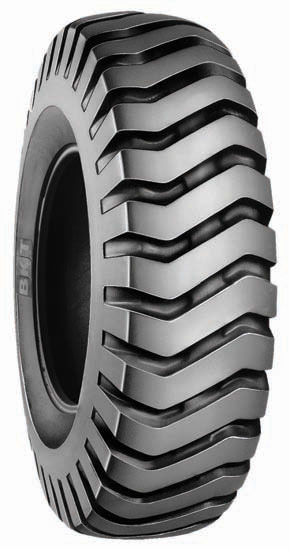 The BKT CRANE SPECIAL is suitable for pick-and-carry cranes on rough terrains. The tyre is made of a special compound that provides high stability and durability. It is also suitable for high-speed use and currently available in three different sizes.
The BKT CRANE SPECIAL is suitable for pick-and-carry cranes on rough terrains. The tyre is made of a special compound that provides high stability and durability. It is also suitable for high-speed use and currently available in three different sizes.
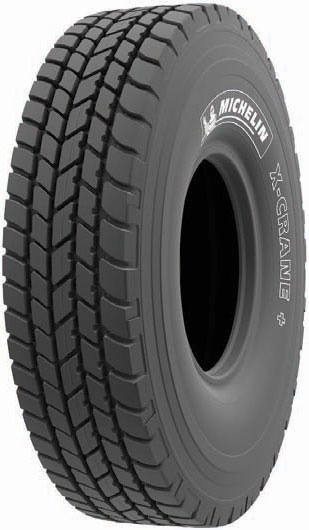 The Michelin X-CRANE + has an increased wear life of up to 15% due to a new, more resistant rubber compound in the tread. It is free of aromatic oils and designed with C2 technology.
The Michelin X-CRANE + has an increased wear life of up to 15% due to a new, more resistant rubber compound in the tread. It is free of aromatic oils and designed with C2 technology.
